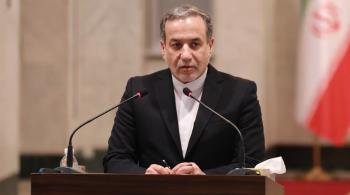Alwaght- The anti-government protests in France is inspiring movements in other countries.
The “yellow vests” movement first was launched in the French capital Paris. After a week, the demonstrations spread to other European capitals, mainly Brussels and Berlin. Now and after three weeks and while the French government has so far failed to convince the protestors to go back to their homes, a similar movement is set to rise this time in Tunisia. The African nation's people are organizing their own version of street protests against Tunisian government, dubbed as Red Vests.
Vests turn red in Tunisia
Wearing the yellow vests during the demonstrations was stylized by the French protestors. The yellow vest is a mandatory safety item in all cars in France, with its absence in the vehicle leads to heavy fines.
The demonstrators in France recently began to wear the jackets to discriminate the protesting population from others. But later some journalists called the wearing a move to deride the French laws.
Anyway, in Tunisia a similar movement has declared existence, with the Tunisian activists circulating an official statement on social media saying that the red vests movement intends to organize peaceful protests against the government's failure to improve economic conditions. Other cases of protest, the statement read, are corruption, high living prices, unemployment, and mismanagement.
The statement read, “we the Tunisian youths today launch the red vest movement to save Tunisia in the shadow of the absence of honesty and transparency of the ruling political class and the deepening gaps between people and government.”
The statement further read that the new campaign marks continued fight for restoration of Tunisian people’s glory and rights.
“Since eight years of the 2011 uprising and under the shadow of a system in which the Tunisians have seen no other than failure, corruption, expensive living, unemployment, and mismanagement… we the Tunisian youths today officially announce the launching of red vests movement.”
Red vests movement a day after admitting corruption
The new campaign comes only a day after the Tunisian Prime Minister Youssef Chahed admitted that there is “widespread corruption” in the country. He, addressing the third conference on fighting the corruption held in the capital, noted that the country has a long history of anti-corruption fight and despite the serious challenges, the country accomplished much over the past two years. “Corruption remains the key problem the government faces, however,” he added.
On May 24, 2017, the Tunisian government launched a clampdown against the corrupt. The move led to the detention of a number of businessmen, customs employees, and smugglers under corruption accusations. But the country is yet has a long way to go. According to Transparency International, Tunisia ranks 74 on the Corruption Perception Index of 2017, one rank higher compared to 2015 and 2016 which was 73. This rank indicates that contrary to what the PM claimed, no serious advances have been made over the past few years.
The rise of the new campaign just a day after the PM’s admission is a response to the deteriorating economic conditions and the bureaucratic corruption in Tunisia, which eight years after the revolution that ousted the dictator Zine El Abedin Ben Ali still stands among the highly-corrupt countries.
Social backgrounds of red vests
The new movement is not much-known yet but its name, emulating the yellow vests in France, discloses its nature of protesting the current economic situation. The movement very likely takes its color from the color of the country’s flag, which is red.
A look back at the Tunisian social conditions makes it clear that the country has been accustomed to anti-government campaigns since the 2011 revolution, which ignited a series of uprisings in the Arab world.
Tunisian political atmosphere has historically been allowing intense activism of the political parties. Under Ben Ali rule, the opposition parties were banned and their activities mainly were secret. But after the revolution, new groups and political parties massively grew, mainly with left-hand and even socialist tendencies. According to the Interior Ministry, up to 2011, at least 278 political movements and parties were officially registered in Tunisia. At least 20 factions embraced leftism and adopted a confrontational policy in dealing with the establishment.
The post-revolution Tunisia failed to realize all of the revolutionary ideals, including the fight against the power and wealth mafia. Although now the political activism in the county is legal, except for groups with extremist ideologies, the power and wealth are held by those held them before the revolution. For example, Nedaa Tounes, the biggest secularist party, is currently ruling the country. Baji Caid Essebsi, the party’s financially powerful leader, was close to former dictator before the revolution.
For the Tunisians, despite the free political atmosphere, the post-revolution power transition was very limited in range and failed to drastically transform the ruling elite. The structural corruption, on the other hand, led to unemployment and thus broadened the class gap. It is in this situation that the red vests declare existence in Tunisia to challenge what they call poverty and corruption roots in the post-revolution nation.



























